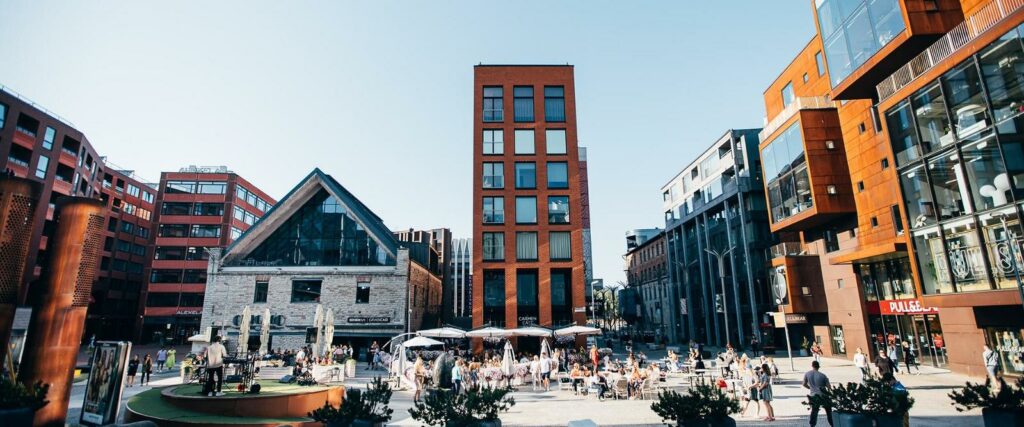For a long time, the capital of Estonia was quite an important industrial hub of the Baltics. Since the 1990s, the country’s economy radically switched to the third sector, especially betting on Tech, innovation, and tourism. This successful turn is now visible in Tallinn’s landscape. Let’s look at two former industrial neighborhoods that radically transformed into trendy and creative spaces.
Rotermann City
Located in the city center between the Old town and the Harbor, Rotterman was one of the oldest industrial areas of Tallinn. After being immortalized in Andrei Tarkovsky’s film Stalker and abandoned, the impressive limestone-made factories were saved from demolition, beautifully restored, and mixed with avant-garde architecture. Thus it transformed into a fancy mixed-use area. It features housing, restaurants, bars, fashion shops, as well as a cinema. It is now an attractive entry door for people visiting the city.
Telliskivi creative city
Created in 2007 on the land of the former Kalinin factory, Telliskivi pulls advantage of its attractive location close to the train station and the old town to become a vibrant and creative cultural area. Today, the former warehouses and ateliers welcome not only art galleries, art workshops, and the museum of photography but also numerous bars, catering establishments, and clubs. Buzzed with activities, Telliskivi attracts the entire youth of Tallinn and becomes a giant dancefloor in the summertime.


